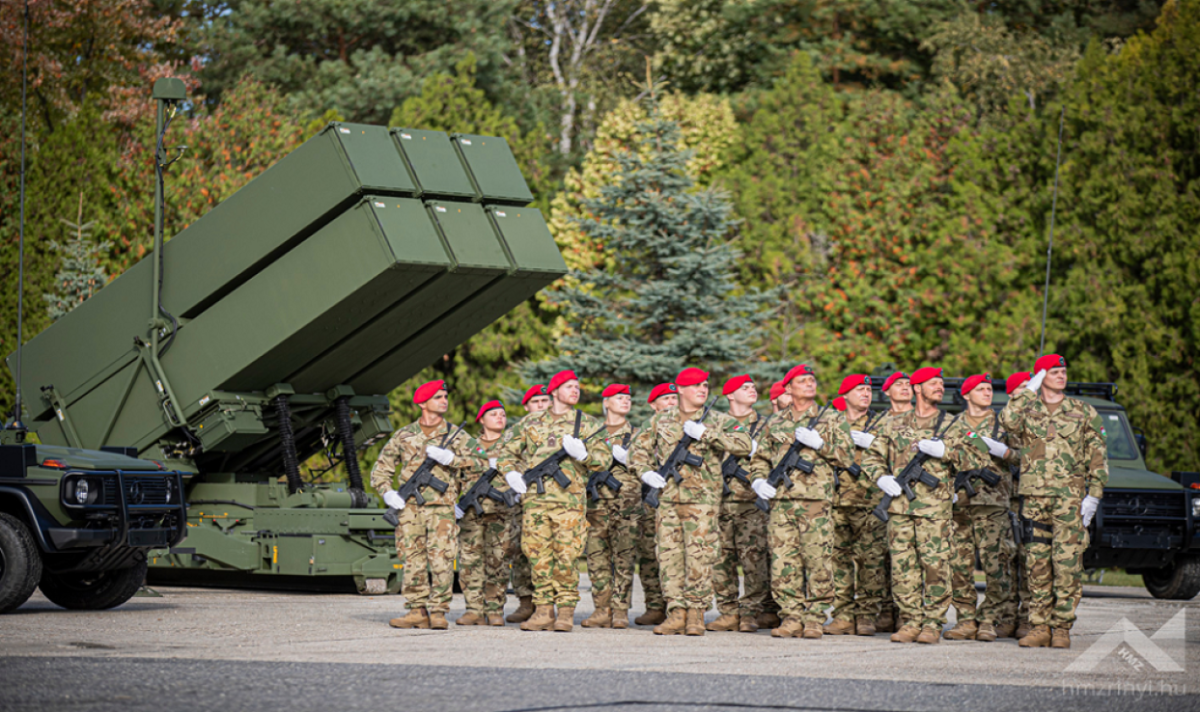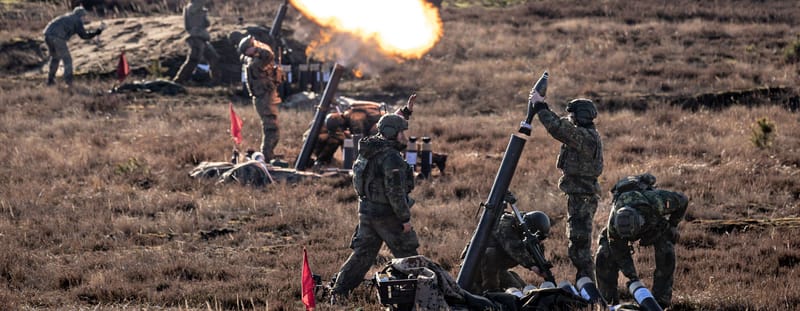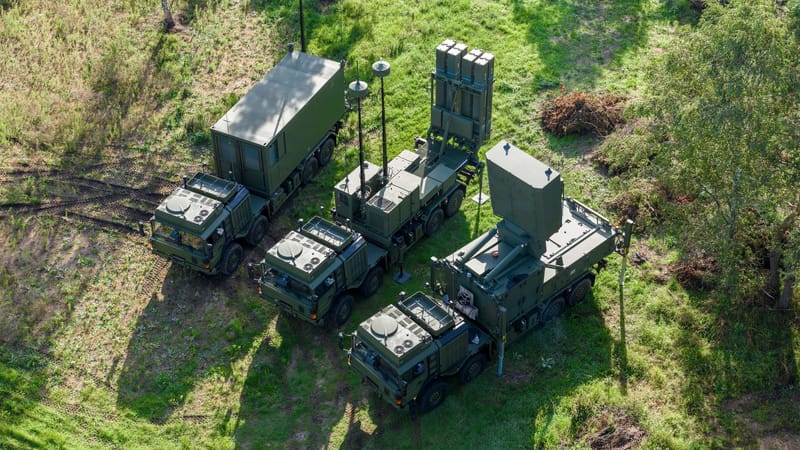Hungary’s Sovereignty-First Doctrine: From Habsburg to EU Federalization to Zrínyi 2026 Military Autonomy
Hungary rejects EU federalization, asserting national control over policy, migration, and defense. Zrínyi 2026 strengthens its military within NATO while ensuring self-reliance. Orbán’s non-interventionist Ukraine stance prioritizes national security over foreign entanglements.

On March 15, 2025, Hungarian Prime Minister Viktor Orbán delivered a speech marking the anniversary of the 1848 Revolution—an emblematic chapter in Hungary’s quest for sovereignty and self-determination. In his address, he drew historical parallels between past struggles against foreign rule and the present-day challenges Hungary faces, including European Union policies, migration, and shifting geopolitical dynamics.
A key aspect of his speech was Hungary’s emphasis on maintaining control over its own affairs, a principle that is also deeply reflected in the Zrínyi 2026 defense modernization program, which is reshaping Hungary's military capabilities within NATO while reinforcing national security autonomy.
Historical Sovereignty: From Habsburg Oppression to EU Federalization and the Zrínyi 2026 Program as a Defense Pillar
Orbán framed his speech around Hungary’s long-standing commitment to self-determination, invoking the 1848 revolution and the 1956 uprising—not as simplistic historical parallels but as testaments to Hungary’s enduring will to resist external control. Unlike Habsburg or Soviet rule, the EU operates under a legal framework that Hungary voluntarily joined.
Yet sovereignty is not defined solely by membership in an alliance; it hinges on the ability to maintain independent decision-making within it. The EU’s increasing push toward federalization, through mechanisms such as centralized policy enforcement and economic conditionality, challenges this principle by shifting authority away from member states. Thus, Hungary’s stance is not about rejecting cooperation but about ensuring it remains a sovereign participant, rather than a passive subject, in European affairs.
Orbán’s vision of sovereignty extends beyond governance—it encompasses national defense. Nowhere is this clearer than in the €13 billion Zrínyi 2026 modernization program, Hungary’s most ambitious military overhaul in decades. Initiated in 2017, the program is the largest military overhaul in Central Europe, equipping Hungary with cutting-edge defense technologies while ensuring the nation does not overly rely on external defense structures, such as the EU’s Permanent Structured Cooperation (PESCO).
For a comprehensive breakdown of Hungary's Zrínyi 2026 program—its €13 billion modernization drive, NATO-aligned defense strategies, and domestic military production—see our detailed editorial on Hungary’s military transformation here.


Critique of EU Policies and Military Autonomy: Migration, Security, and Sovereignty
Orbán condemned what he sees as 'Brussels’ overreach,' particularly in security and migration policy. While some claim that the EU’s migration policies are merely responses to humanitarian crises, this narrative ignores the ideological push behind mass migration frameworks.
The EU has moved beyond tolerance, actively promoting migration through policies like mandatory relocation quotas, asylum incentives, and legal restrictions on deportation. Hungary's take is hence not merely an administrative response but rather a strategic attempt to reshape Europe’s demographic landscape, prioritizing ideological commitments over national stability. Hungary’s position is not opposition to asylum itself but primarily a rejection of what they consider 'forced demographic engineering' that disregards national identity, security, and social cohesion.
Hungary’s Defense Stance: National Self-Sufficiency vs. EU Military Integration
Hungary’s emphasis on border security aligns with its broader strategy of military self-reliance. The Zrínyi 2026 program has focused on strengthening domestic defense capabilities, reducing dependence on EU-led security mechanisms like PESCO. While Hungary prioritizes national defense infrastructure, other EU nations, including Germany and France, pursue both national investments and regional defense cooperation—highlighting alternative approaches to security autonomy.
A prime example of Hungary’s push for strategic autonomy is the procurement of 218 Lynx KF41 Infantry Fighting Vehicles (IFVs) from Rheinmetall. This investment modernizes its mechanized forces while fostering domestic defense production through a new Zalaegerszeg manufacturing line.
This facility, which started operations in 2023, produces around 50 Lynx vehicles per year, including variants equipped with Skyranger 30 air defense systems, reinforcing Orbán's argument that Hungary must have direct control over its own defense infrastructure.
Hungary is not alone in questioning EU-led defense integration. Germany’s struggles with defense financing and modernization highlight a broader issue: balancing national security priorities with EU collective frameworks. A parallel analysis of Germany’s defense overhaul and its constraints can be found here.


Hungary's Stance on Russia-Ukraine: Hungary’s Non-Interventionist Defense Policy
Orbán reiterated Hungary’s policy of measured involvement in the Russia-Ukraine conflict, emphasizing national interests over reactionary entanglement. Some critics claim that this approach weakens NATO’s deterrence posture, but this misreads the reality of effective defense strategy. Hungary remains committed to NATO but insists that its contributions align with its own national security interests.
Overextension in a drawn-out conflict, with no clear exit strategy, could weaken national readiness rather than strengthen it. Furthermore, they argue that the West’s unchecked escalation has done little to deter Russian aggression, thus raising the risk of direct confrontation between NATO and Russia - a scenario that could be described not less than catastrophic for Hungary’s strategic position.
Hungary’s defense strategy prioritizes territorial security over foreign entanglements. This principle is evident in its NASAMS acquisitions and participation in NATO’s Ground-Based Air Defence (GBAD) Support Partnership, reinforcing a national-first defense posture, ensuring military resources serve Hungary’s security, not open-ended conflicts. His remarks align with Hungary’s defensive military modernization efforts under Zrínyi 2026, which were largely initiated in response to Russia’s actions in Ukraine but designed to serve national rather than EU strategic priorities.
Hungary’s recent procurement of NASAMS (National Advanced Surface-to-Air Missile Systems) underscores its focus on bolstering territorial defense rather than deploying resources for foreign engagements. Furthermore, Hungary’s participation in NATO’s GBAD (Ground-Based Air Defence) partnership, finalized in October 2024, provides essential collective security benefits while ensuring Hungary retains command over its missile defense systems. This dual approach illustrates Hungary’s balancing act: integrating with NATO while resisting direct military entanglements beyond its borders.
Foreign Influence in Hungary: Limiting External Interference
Orbán’s measures to limit foreign influence in Hungary’s political, media, and civil society sectors are frequently framed as an assault on democracy. However, he presents them as a means of reclaiming national agency from external interests.
Foreign-funded NGOs, many backed by organizations with clear ideological agendas (such as Open Society Foundations), have been operating as de facto political agents, influencing elections, policy decisions, and even judicial rulings. In the realm of media, unchecked foreign ownership has allowed narratives hostile to Hungary’s sovereignty to dominate public discourse. Rather than an attack on democracy, these measures are a rebalancing of influence to ensure that political discourse remains accountable to Hungarian citizens, not external actors.
Similarly, while some argue that limiting foreign investment could harm the economy, the opposite is true: strategic investments—such as defense production in Zalaegerszeg—demonstrate that sovereignty-driven economic policies create sustainable, self-reliant growth rather than dependency on global capital flows.
For example, instead of aligning with EU-wide defense procurement initiatives, Hungary has independently negotiated deals for 44 Leopard 2A7+ main battle tanks and 24 PzH 2000 self-propelled howitzers, ensuring direct control over military acquisitions. This approach mirrors Orbán’s speech rhetoric: sovereignty is not only about political governance but also about ensuring independent operational control over military assets.
Read more about recent developments of Hungarian military modernization efforts here on grosswald.org:


Conclusion: National Sovereignty as a Guiding Doctrine
Prime Minister Orbán's March 15, 2025, speech reinforced Hungary’s commitment to national sovereignty across multiple domains, from resisting EU federalist policies to enhancing its independent military posture. The Zrínyi 2026 program serves as a tangible reflection of this vision, demonstrating Hungary’s efforts to fortify its defense infrastructure, enhance regional security without external overreach, and build a sustainable domestic defense industry.
By integrating military modernization into the broader sovereignty discourse, Orbán presents Hungary as a self-sufficient actor within NATO, resistant to EU centralization, and firmly committed to preserving its national identity and security. Hungary’s sovereignty-first approach does not reject international cooperation; rather, it seeks to redefine it on its own terms. While some suggest that resisting EU centralization could lead to diplomatic isolation, this overlooks a crucial trend: nations that prioritize sovereignty are gaining strategic leverage.
The resurgence of multipolar geopolitics means that countries maintaining independent decision-making might be better positioned to negotiate favorable terms with multiple partners, rather than being locked into rigid supranational structures. Hungary’s ability to forge direct defense agreements, maintain a flexible but robust NATO commitment, and implement long-term economic strategies without foreign dependency demonstrates that sovereignty is not a liability—it seeks to be an adaptive advantage in a rapidly shifting global order.


Related Topics
- Hungarian Defense Modernization: Inside the Zrínyi 2026 Program
- Poland’s Homeland Defence Act: Transforming NATO’s Eastern Flank
- Germany’s €500 Billion Debt-Financed Defense Package
- Lithuania Orders Leopard 2A8 Tanks Near Belarus
- Poland and Slovakia Strengthen Defense Ties with Joint Armament Projects









